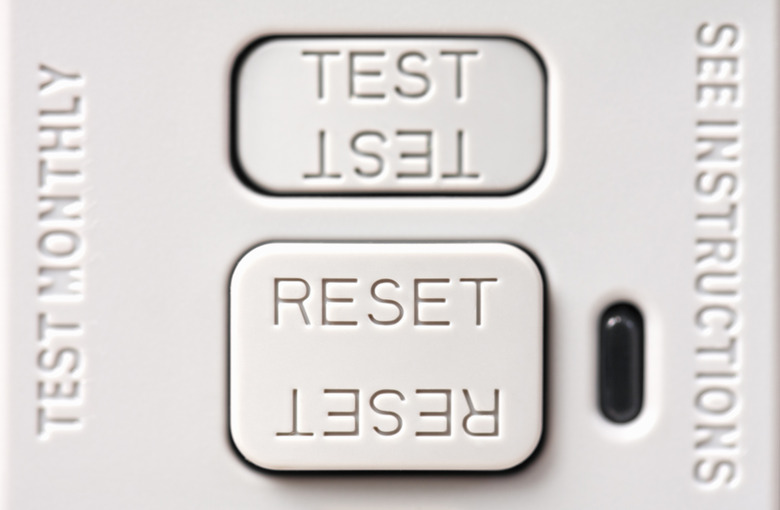What Are Reset And Test Switches On An Electrical Outlet?
We may receive a commission on purchases made from links.
Although ground-fault circuit-interrupter (GFCI) and arc-fault circuit-interrupter (AFCI) wall sockets both have test and reset buttons, these two devices do very different things. Both are designed to keep you safe from electrical hazards, but the two perform different functions and are not interchangeable. You'll find GFCI outlets in your bathroom, near your kitchen sink, and in other areas where water and electricity could accidentally mix. Living rooms, bedrooms, hallways, and other parts of your home where water is not present will feature AFCI outlets.
Tip
The outlet reset button allows you to turn your electrical outlet back on if it trips and turns itself off. The test button allows you to periodically confirm that the safety features on your GFCI or AFCI outlets are working properly.
GFCI Electrical Outlets
GFCI Electrical Outlets
The design of GFCI wall sockets is meant to protect people from accidental electric shock. In order to understand them, you must remember that an electrical current will always follow the path of least resistance on its way to ground. This can sometimes cause ground faults. A ground fault occurs when electricity strays from its intended path because it finds a better conductor, such as water.
This is why your bathroom outlet (among others) requires a GFCI socket. These sockets continuously monitor the flow of electricity through the circuit and immediately shut it down if the current reads improperly. This process takes less than one-tenth of a second and has saved an estimated 1,000 lives since the universal adoption of these outlets in 1971. For example, if your electric hair dryer falls into the tub while you're in the bath, the GFCI outlet would stop the flow of electricity before the electrical current traveled through the water to you, avoiding severe burns or even death.
AFCI Wall Sockets
AFCI Wall Sockets
While GFCI outlets serve to protect you from electric shock, AFCI outlets offer protection from fires caused by arc faults. Sometimes, a frayed electrical cord or deteriorating electrical wire allows electricity to flow where it shouldn't flow. A frayed power cord, for example, could allow electricity to come in contact with the carpet on your living room floor, eventually overheating and igniting the carpet.
Like GFCI outlets, AFCI sockets monitor the flow of electricity and turn it off when they detect an electrical arc, or misdirect. AFCI outlets are particularly helpful in situations where you can't see the problem. It's obvious if someone drops a toaster in the sink, but arc faults can be more subtle than ground faults A mouse chewing on an electrical wire inside your walls, for instance, can trip the outlet. The AFCI outlet will keep you safe even when you're unaware of your house guest.
Test and Reset Outlets
Test and Reset Outlets
When a problem of some type trips a GFCI or AFCI outlet, unplug everything from the wall and then press the reset button. This button will pop out when the outlet shuts off and should easily go back in when you want to reset it. You can then resume using the outlet. If the reset button pops back out again as soon as you push it, replace the outlet or have an electrician examine it for you.
The test button is also an important feature of GFCI and AFCI outlets. Modern outlets continually monitor themselves, but it's still a good idea to test them once in a while to make sure they work. To do so, unplug anything plugged into the outlet and then press the test button. The outlet should lose power, and the reset button will pop out. You can then simply hit reset to turn the outlet back on again.
If the reset button doesn't pop out when you hit the test button, the unit isn't working properly, and you must replace it. Again, you can do so yourself if you feel comfortable working with electrical systems, or you can call an electrician for help. Ideally, you should test your outlets once a month.
References
- Safe Electricicty: Ground Fault Circuit Interrupters (GFCIs)
- American Home Shield: How to Reset GFCI Outlets
- Jaffe Electric Company: What Do "Test" and "Reset" Buttons Do on Outlets?
- City of South San Francisco, California: AFCI vs. GFCI Receptacles
- IGS Energy: What Is This Outlet With Test and Reset Buttons?
